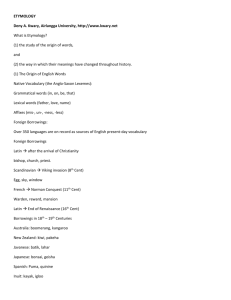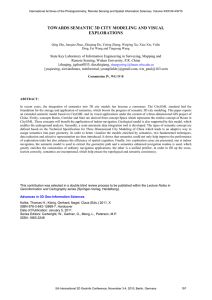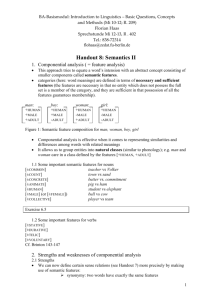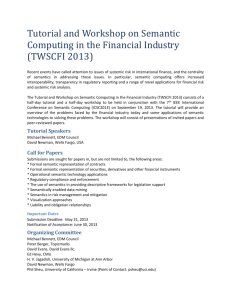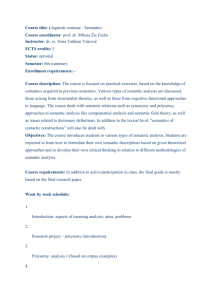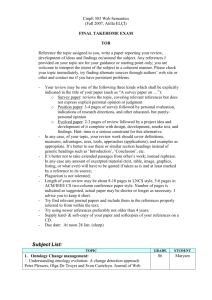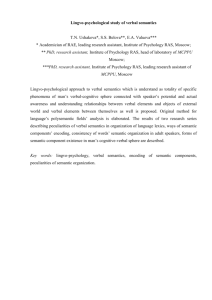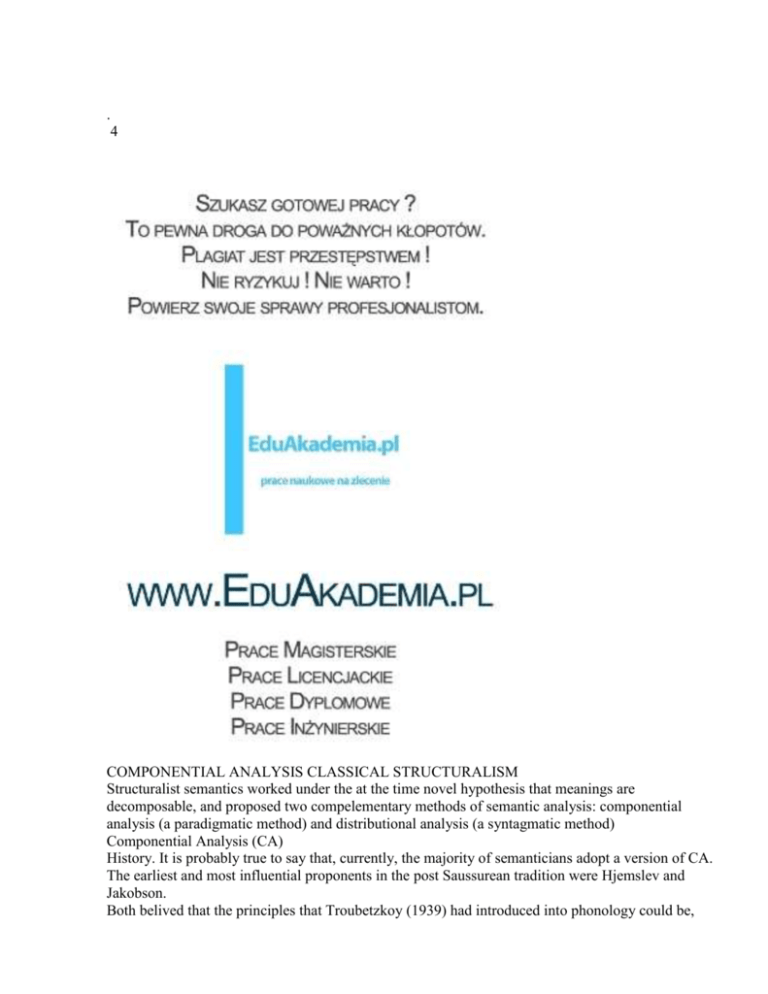
.
4
COMPONENTIAL ANALYSIS CLASSICAL STRUCTURALISM
Structuralist semantics worked under the at the time novel hypothesis that meanings are
decomposable, and proposed two compelementary methods of semantic analysis: componential
analysis (a paradigmatic method) and distributional analysis (a syntagmatic method)
Componential Analysis (CA)
History. It is probably true to say that, currently, the majority of semanticians adopt a version of CA.
The earliest and most influential proponents in the post Saussurean tradition were Hjemslev and
Jakobson.
Both belived that the principles that Troubetzkoy (1939) had introduced into phonology could be,
and should, be extended into semantics.
Foremost among European theoreticians of CA are linguistists like Greimas, Pottier, Coseriu
In the USA, CA appears to have developed independently.
It was proposed by anthropologists, as a technique for describing the vocabulary of kinship terms in
different languages (See Goodenough (1963), Lounsburry (1964)).
Only later was it taken up and generalized by Nida (1964, 1975), Weinreich (1963), Katz and Fodor
(1963), Katz (1972).
Main assumption:
The sense of every lexeme can be analyzed in terms of more general sense components, some, or all,
of which will be common to several lexemes in the vocabulary.
Aims of the method:
to discover the elementary units of meaning, the invariants of the semantic level, or perhaps the
“minimal units”, the primes of the level.
To show the systematicity of the vocabulary, by revealing the various relations (similarity,
incompatibility) holding between the lexical items.
Methodologically, CA exploits the hypothesis of the isomorphism of the linguistic levels, a
hypothesis which invites a transfer of methods from one level to another.
The methodological transfer, advocated by Hjemslev, Coseriu, etc. is from phoneme to the word:
The analogy between the phoneme and the word is apparent in the following properties they share:
a) The lexeme, just like the phoneme may differ only with respect to some distinctive feature from
some other lexeme:
stallion : mare
SEX MALE : FEMALE
b) The same opposition is found in many pairs of lexical items: these pairs establish a correlation in
the lexicon, just as there are correlations in the phonological system:
(i) SEX MALE : FEMALE
tom-cat tabby-cat
jack-ass jenny-ass
usher usherette
(4) c) Like phonological oppositions, semantic oppositions ma by neutralized, with the unmarked,
extended term covering the semantic space named by the opposition. Here are a ger examples where
the opposition is neutralized.
Semantics and Semantic Change - basic concepts-opracowanie
Synchronic and diachronic semantics
Linguistic Structuralism-main issues-opracowanie
Types of Semantic relations-opracowanie
Lexicology-main issues-opracowanie
Philosophy of Psychology and Cognitive Science - wykład
Reklama
Administracja publiczna
.
Działalność gospodarcza
Kodeks postępowania administracyjnego



